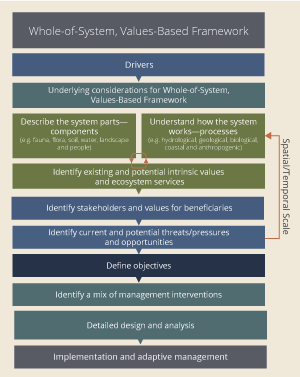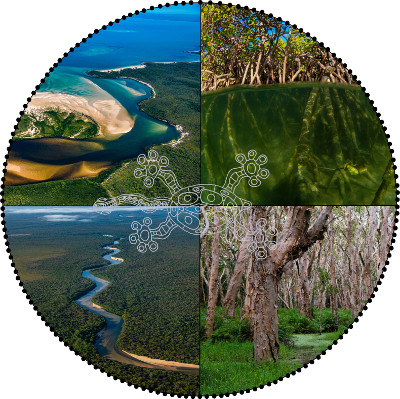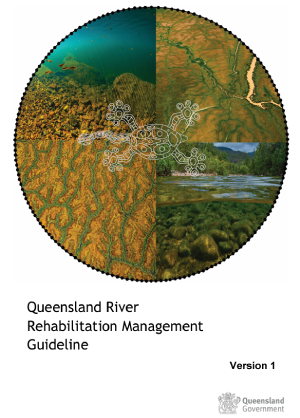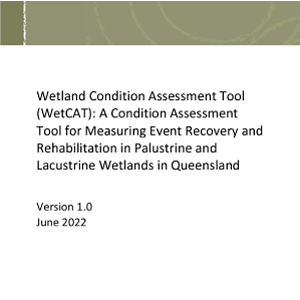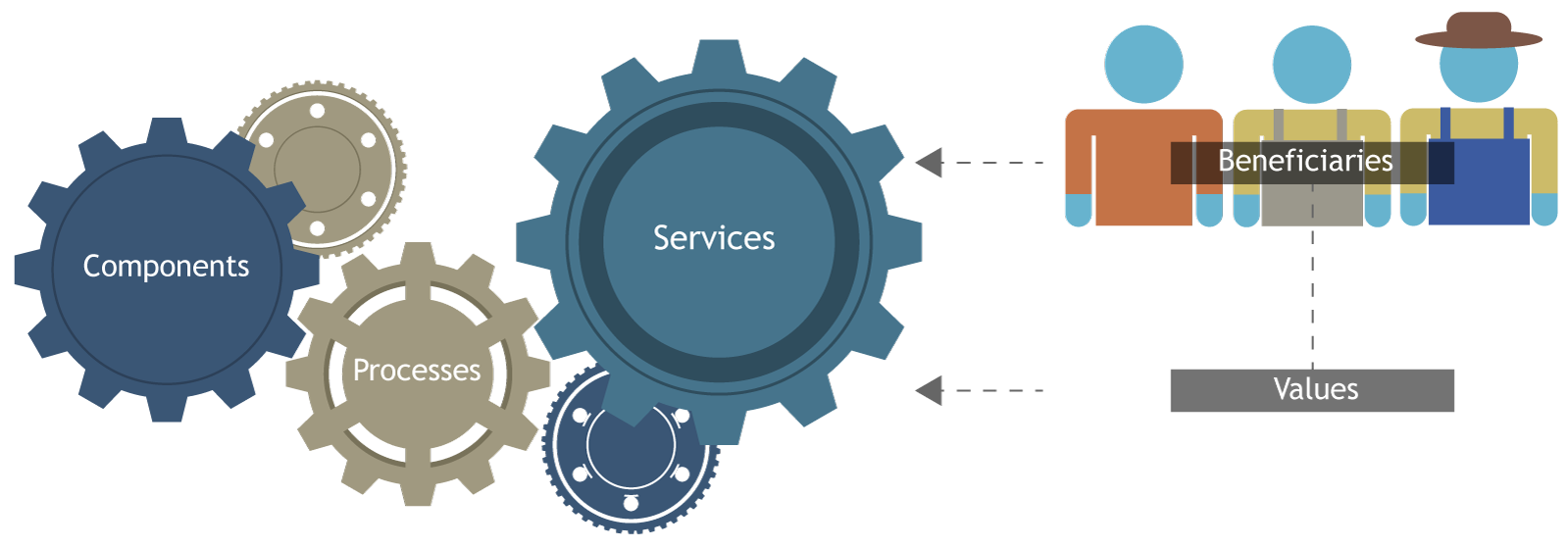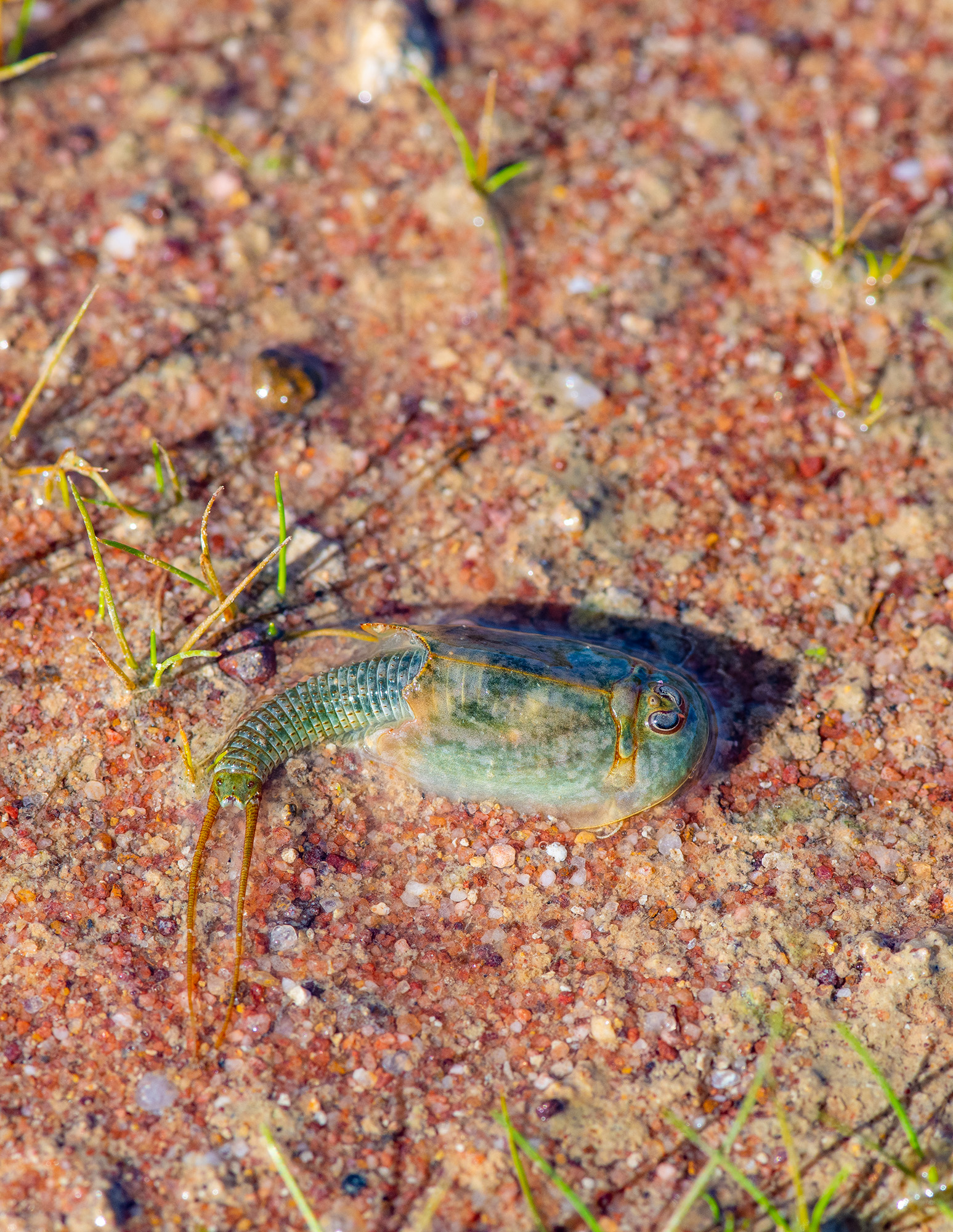|
|
WetlandUpdate June 2022Whole-of-System, Values-Based FrameworkThe Whole-of-System, Values-Based Framework (the Framework) draws explicit connections between the biophysical environment, the beneficiaries of the services provided by that ecosystem and their values. The Framework uses a holistic management approach to achieve outcomes that consider the biophysical environment alongside social, economic and cultural outcomes[1] at multiple temporal and spatial scales. The Framework has been developed through the synthesis of other frameworks and tools and extensive stakeholder consultation and is underpinned by underlying considerations. Aquatic Ecosystem RehabilitationThe Aquatic Ecosystem Rehabilitation section provides background information on aquatic ecosystem rehabilitation, and the Aquatic Ecosystem Rehabilitation Process (Rehabilitation Process). The Rehabilitation Process is based on the Whole-of-System, Values-Based Framework and involves a comprehensive and integrated, values-based approach to aquatic ecosystem rehabilitation. The seven-step process involves a transparent approach to aquatic ecosystem rehabilitation including the development of an aquatic ecosystem Aquatic Ecosystem Rehabilitation Plan and supported by a Aquatic Ecosystems Rehabilitation Mapping Report. The Rehabilitation Process and the underpinning Framework have been designed to ensure that management decisions are informed by linking an understanding of the biophysical components (parts) and processes of aquatic ecosystems to the broader landscape, and to an understanding of the ecosystem services society derives from the aquatic ecosystem. This enables consideration of the value of these services to different beneficiaries and the pressures to them. Queensland River Rehabilitation Management GuidelineThe Queensland River Rehabilitation Management Guideline (QRRMG) provides a consistent and transparent approach to river rehabilitation including the development of a river rehabilitation plan. The QRRMG provides a high-level summary of the seven step Rehabilitation Process including the rationale for each step and what each step involves. It is complemented by the Aquatic Ecosystem Rehabilitation Process pages which provide further details for each step and links to appropriate resources and management interventions options. The QRRMG is primarily intended for those parties that are responsible for creating management plans for the rehabilitation component of river management. The QRRMG provides a process that can reinforce a proactive rather than reactionary approach to river management.
Wetland Condition Assessment Tool (WetCAT): A Condition Assessment Tool for Measuring Event Recovery and Rehabilitation in Palustrine and Lacustrine Wetlands in QueenslandThe WetCAT has been designed as a rapid assessment method, to measure a change in condition of lacustrine and palustrine wetlands, in response to an event (such as a bushfire), and to track impacts of management interventions (such as rehabilitation activities). The WetCAT has also been designed to undertake an assessment of threats to better understand the relationship between threats and changes to wetland condition. WetCAT has been reviewed and field-tested in many parts of Queensland by different stakeholders. Wetland Values and ServicesThe Weland Values and Services pages have been updated, including:
These updates and new pages provide information on wetland values, the ecosystem services wetlands provide, how to identify ecosystem services, who beneficiaries and stakeholders are and how to classify beneficiaries (to understand the relationship between beneficiaries and the environment). The What services do wetlands provide and How are beneficiaries classified pages include comprehensive lists of services and beneficiaries that can be used in aquatic ecosystem projects.
Updated Treatment system PagesThe Treatment systems webpages have been updated based on new research and publications since it’s release 2018, to include new information, links and references for each treatment system, a new section on vegetated drains and updated layout. Updates to the Assessment Toolbox The Common International Classification of Ecosystem Services (CICES) V5.1 uses a hierarchy to classify services that arise from biotic (e.g. living) and abiotic (e.g. non-living) structures and processes within ecosystems. It identifies both the purposes or uses that people have for the different kinds of ecosystem service and the particular ecosystem attributes or behaviours that support them. The Wetland Condition Assessment Tool (WetCAT) is a rapid assessment tool to measure the change in condition of lacustrine and palustrine wetlands in response to 1) an event such as a bushfire or flood, and/or 2) from the impacts of management interventions such as rehabilitation activities. Updates were made to the fish barrier prioritisation methodology Fish Barrier Prioritisation (Landscape Scale Coastal, no economic analysis) and Fish Barrier Prioritisation (Wetland/Offstream). UpdatesUpdated layers on WetlandMaps and WetlandSummary
Programs, policies and legislation pagesThe programs, policies and legislation pages have been updated to include general updates, including updates to SDAP codes. Additional links
WetlandUpdateThe WetlandUpdate is a regular bulletin sent to subscribers to provide you with the latest WetlandInfo resources and tools, as well as case studies, video information and new project fact sheets. WetlandInfo feedback and improvementsContact us via email for feedback, information or questions about wetlands. WetlandInfo feature speciesThe feature species for June is the Shield Shrimp, Triops australiensis. Triops australiensis are desert dwelling crustaceans, spawning in temporary pools and claypans filled by rain. Eggs are highly resistant to drought and may need to be completely desiccated for a period, before larvae develops when it rains again. Dried eggs are easily dispered by wind and animals feet. When hatched, Triops australiensis begins life as a larva (called a nauplius) and forms a third eye, which is used to detect light. Triops australiensis has a large carapace that shields its head and upper body. Triops australiensiscan grow up to 5-7cm in length. Recent work on Triops australiensis suggests there are distinct genetic races, and even separate species, in different isolated habitats. Additional informationThis section is updated regularly, so stay tuned for more!References
Last updated: 30 June 2022 This page should be cited as: Department of Environment, Science and Innovation, Queensland (2022) WetlandUpdate June 2022, WetlandInfo website, accessed 8 May 2025. Available at: https://wetlandinfo.des.qld.gov.au/wetlands/resources/publications/latest-news/2022-06-27.html |

 — Department of the Environment, Tourism, Science and Innovation
— Department of the Environment, Tourism, Science and Innovation

